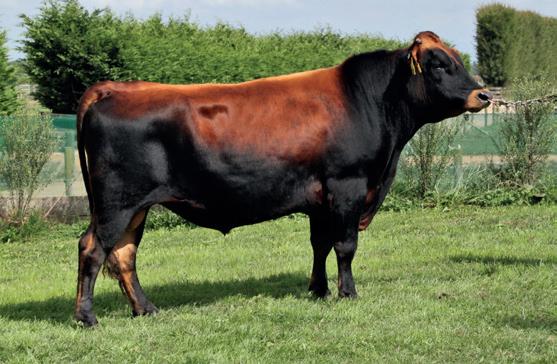
2 minute read
Shareholder and contract milking schemes work well in New Zealand
Aiden Cunningham reports on his trip to New Zealand are used on these SPS farms, to generate daughter proofs. The daughters are milk recorded and evaluated for “Traits other than Production” (TOP). Of the 200 bulls that enter the SPS, only 20 graduates move into the Forward Pack team.
Some 60% of all the semen sold in NZ is from the Forward Pack. This works well to maximise genetic gain across the country. Most of the top breeders we visited were using a mix of Forward Pack and nominated sires.
In New Zealand, 85% of the cow’s diet is grazed grass and 14% of the cow’s diet is supplemented in the form for maize silage, bought in silage, crops and meal. Cows on average produce 400kg MS from a 268-day lactation and farms produce around 1200kg MS per hectare. Of New Zealand’s 4.9 million cows, 50% are crossbred, 32.5% are Holstein Friesian and 8.2% are Jersey1
Everything is based off grass growth, while maize silage or grazing crops may help extend lactations or fill deficits, particularly in drought prone areas. But for the most part, grass is king, and both management and milk production is dictated by pasture growth and pasture supply.
One of the most striking differences between Ireland and New Zealand, are the number of dairy farms that operate under a sharemilking or contractor milking arrangement.
Nearly 45% of herds have either a contract milker or a 50/50 sharemilker. In comparison, Ireland only has 3,500 registered farm partnerships and, while most of these are dairy farm partnerships, the vast majority of these are between members of the same family.
Less than 20% of farmed land In Ireland is rented (these numbers include dry stock and tillage farms).
A contract milker is a self-employed farmer that comes onto the farm supplying management, labour, quads, jeeps, fuel, electricity, and dairy shed expenses in return for a percentage of the milk cheque. A 50/50 sharemilker does the same, but also brings with them all the cows and tractors and pays all animal and animal health related costs while splitting the nitrogen and feed bills with the landowner. This system allows for much better career progression and better work life balance for the landowner. Travelling around the country and spending time with different breeders, it was notable that focus was being put on several traits. The key ones were efficiency, capacity and udders.
Due to the changes to environmental regulations, and the fact that New Zealand had reached peak cow numbers, the focus is now on breeding a cow that’s efficient on a kg MS per kg LWT basis as well as a kg MS per kg DM eaten.

Where stocking rates need to be reduced, particularly in areas such as Canterbury and Southland, farmers and breeders in these regions are focusing on capacity. They want an animal that can eat as much of the homegrown feed as possible, producing as much milk as possible from this feed.
And, with this increase in production, farmers are looking to make sure they’re also improving udders so their cows will be able to handle the increase in kg MS. The udder overall score from the TOP traits has now been included into Breeding Worth. We were lucky enough to see some brilliant herds and breeders, such as Brendan Whyte, who purchased the Okura herd, the herd that OKT was bred from. Also Murray Gibb’s herd, breeders of Tironui Superman. All the breeders we met had such an intimate knowledge of their cows and their pedigree and were fanatical about breeding. This was motivating and great to see, and it was certainly a very worthwhile trip.
1 New Zealand Dairy Statistics







